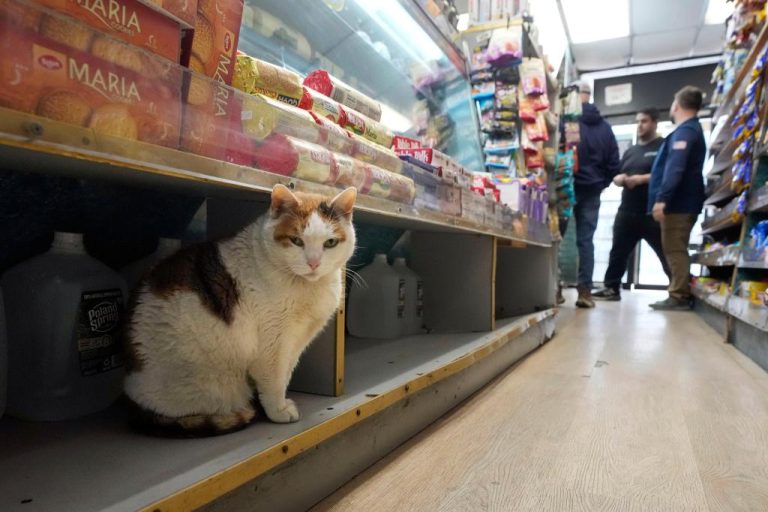As the weather turns chilly in the coming weeks and months, San Diego Gas & Electric officials are guardedly optimistic that utility customers with natural gas hookups won’t see a repeat of last winter when bills hit all-time highs.
“Operationally, we’re better situated today than we were last year,” said Rodger Schwecke, chief infrastructure officer for San Diego Gas & Electric and Southern California Gas, at a virtual workshop Thursday organized by the California Public Utilities Commission. “Everything points in a positive direction, but we all know the weather can change tomorrow.”
Of SDG&E’s customer base of 3.7 million, about 905,000 have gas meters and they crank up their heating units as the weather gets colder.
At the start of 2023, the commodity (or wholesale) price of natural gas soared to record levels across California and below-normal temperatures caused prices to soar to unprecedented levels. Some SDG&E customers saw their January and February utility bills more than double, making them irate.
Market conditions look better for the coming winter — although utility and natural gas company representatives at the workshop were quick to add caveats.
Ray Sasaki, director of gas acquisition at SoCalGas, said the chance of a price surge is tamped down because natural gas prices are low right now and production has picked up, leading to higher storage inventories.
But on the other hand, meteorologists anticipate another El Niño weather pattern this winter, which often results in wet conditions for California and an uptick in demand. That’s caused a rise in natural gas futures prices in the region and concerns about market volatility.
Sasaki described the takeaway as, “elevated, but less extreme.”
“Financial markets in general do not like uncertainty,” said Pete Koszalka, Pacific Gas & Electric’s director of Core Gas Supply. “And the big unknown coming into winter is weather, of course. We have a fairly tight supply-demand balance so small events can really trigger big price moves.”
What’s different this time?
Reasons for an improved outlook this winter include:
- A 770-mile segment of pipeline that serves as a major source of natural gas to Southern California has been back in service since February. The Kinder Morgan line had been shut down for about 18 months after an explosion in the town of Coolidge, Ariz., in August 2021 killed two people.
- Other gas pipelines servicing the West that were shut down for maintenance last winter are back up and running. About 95 percent of Southern California’s natural gas comes from outside the Golden State.
- Plus, the Aliso Canyon natural gas storage facility in Los Angeles County in late August received the OK from the Public Utilities Commission to boost capacity from 41.16 billion cubic feet to 68.6 billion — an increase of 66.7 percent.
The decision by the commission, known as the CPUC for short, was controversial.
A leak at the SoCalGas facility that began Oct. 23, 2015, took 118 days to cap and released nearly 100,000 tons of methane and other substances into the atmosphere and forced thousands living nearby to evacuate their homes. Many of the residents of the Porter Ranch area have insisted the storage site must be shut down immediately.
State officials plan to close Aliso Canyon in 2027, as California tries to wean itself off fossil fuels, but the utilities commission in its 5-0 vote cited concerns about natural gas supplies and volatile price swings in the energy markets for the decision to increase Aliso’s storage capacity.
“We will reduce our dependency on Aliso Canyon but we also need to allow people, especially low-income and vulnerable communities, to access affordable energy as we move to a new electrified economy,” CPUC president Alice Reynolds said at the August meeting.
SDG&E’s natural gas is purchased by SoCalGas, a fellow subsidiary of San Diego-based Fortune 500 energy giant Sempra.
The price for what’s called “core procurement” that goes to residential and small commercial customers is set at the start of each month.
The SoCalGas procurement price spiked to $3.45 per therm in January 2023 — more than four times higher than the previous year — before the price dropped to more normal levels in March. A therm refers to one unit of natural gas.
This month’s procurement price stood at 38.1 cents per therm, the lowest since May 2021.
A typical SDG&E customer uses an average of 19 therms in November and the amount grows as the weather gets colder. The five-year average is 31 therms in December, 44 in January, 39 in February and 35 in March.
As per CPUC rules, investor-owned utilities such as SDG&E cannot profit on the price of electricity or natural gas. The cost is a direct pass-through — meaning if a California utility pays, say, $1 for natural gas in the commodity market, that’s what customers pay.
High natural gas prices don’t just affect customers who have gas hookups in their heating units, stoves and appliances. Natural gas is the largest single energy source in California’s power mix — 36.4 percent in 2022 — so when gas prices go up, overall electricity rates go up, too.
For example, SDG&E uses natural gas for power production at places such as its 500-megawatt combined-cycle Palomar Energy Center in Escondido.
Suspicions
Last winter’s price spike led some to speculate the natural gas market had been manipulated.
Gas “prices don’t just double overnight because things got a little colder than last year,” Jamie Court, president of Los Angeles-based Consumer Watchdog, said in January.
Two months later the CPUC voted unanimously to launch an investigation to look into potential market manipulation, review whether utilities effectively communicated to customers about the impacts higher prices would have on their bills, and find ways to avoid similar price spikes in the future.
Thursday’s meeting was part of the commission’s investigation.
“Looking into what happened last year, we really want to work to raise the bar in terms of effective communications to customers,” said Karen Douglas, one of the CPUC’s five commissioners, “and, broadly, situational awareness about where we are and how we’re looking as the winter progresses.”
Another workshop is scheduled for the first quarter of next year.




